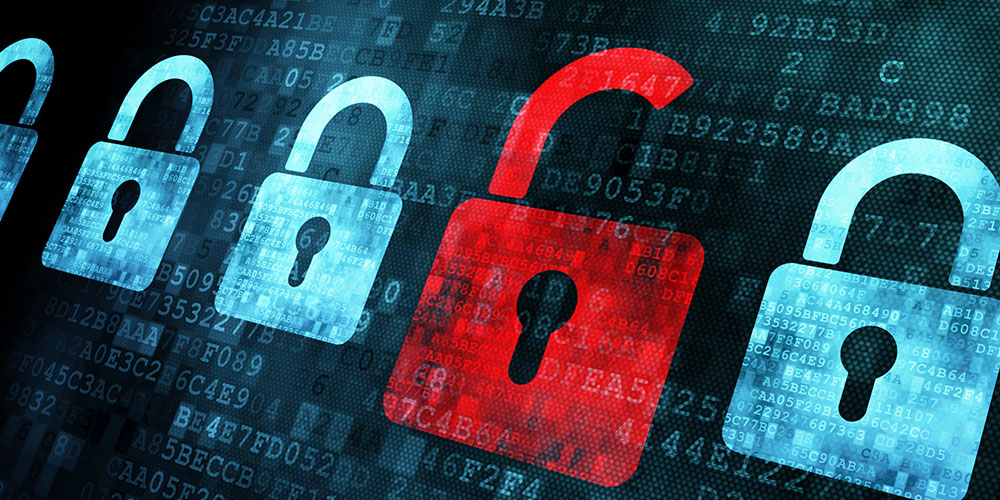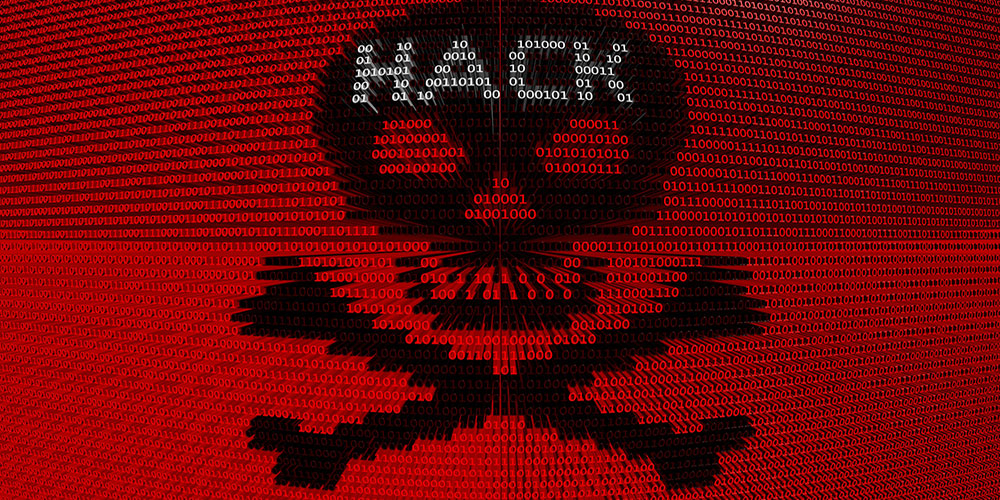
Feb 14, 2019 | SMB Technology, SMB Technology, SMB Technology, SMB Technology, Technology News
Imagine that your employees could be your strongest defense against cyber attacks, rather than a potential area of weakness. According to a CompTIA 2019 industry trends report, in all the innovation taking place, cybersecurity is an enduring concern. Other statistics indicate that user error contributes to nearly 25% of cyber breaches. Read on to learn more about how to train your employees to be your greatest defense against cyber attacks. Train Employees to Defend Against Cyber Threat Cyber attacks are on the rise, in the form of phishing (and spear phishing) designed to implant malware on devices, and merely installing antivirus detection software or firewalls is only one part of prevention. Employees need consistent training on how to recognize phishing attempts, and this training needs to be reinforced frequently. Employees trained to recognize and report phishing schemes–wherein a bad actor poses as a legitimate entity in order to garner personal information—can be an asset in your cybersecurity strategy. One facet of training involves making employees aware of different types of schemes, such as hackers gathering specific information about employees or about your company, also known as spear phishing. In this type of attack, phishers can even make it look like an email is coming from a supervisor, in order to trick employees. Keep Cybersecurity Training Continuous Once employees are aware of specific threats, emphasize that they have a key role in protecting your business and themselves at the same time. Teach them through testing their knowledge via fake phishing schemes or a USB drop. Various vendors offer different resources for training and reinforcement. Another idea for ongoing training is...

Feb 9, 2019 | SMB Technology, SMB Technology, SMB Technology, SMB Technology, Technology News
With the upcoming end of service for Microsoft Windows 7 and Server 2008 r2, many business owners will need to consider their options. While the end of service for these operating systems is scheduled for January 2020, most technology advisors agree you need a plan of action today. To learn more about what these changes mean to keep your business systems running and secure, read on. What the End of Service Means for Cybersecurity Protection According to a ClikCloud article late in 2018, Microsoft announced the end of service for Windows 7 and Server 2008. One of the primary considerations is that operating systems patches that provide protection from Cyber Attack will no longer be available, potentially putting your network security in jeopardy. Application Support and Windows End of Service Some commercial or custom applications may be incompatible with the new Microsoft operating systems. As a result, you may need to upgrade to a compatible version of desktop, server or database versions to avoid any unintended downtime or loss of productivity. In addition, to update your application software, you may consider virtualization, desktop as a service or cloud migration as options to ensure continued productivity for your employees. Consider Infrastructure as a Service (Iaas) as an Option Moving workloads and application hosting to the cloud may provide additional benefits. Having your infrastructure in the cloud, rather than on-premise, offers the benefits of cost-saving, and added security. This form of cloud computing enables you to convert a capital expense to a more predictable operating expense, without hardware and software that needs updating. Resources can be scaled to handle increased and...

Jan 17, 2019 | SMB Technology, SMB Technology, SMB Technology, SMB Technology, Technology News
According to a recent CompTIA report, even though people know what to do to avoid security breaches, they don’t always put this knowledge into practice. Employees can, however, take advantage of cybersecurity training in the workplace, learn to change passwords frequently, and implement other safeguards. How to Identify a Phishing Scheme The mouse arrow can be pointed at a suspected link exposing information you can use to identify an untrusted source. Another clue to be on the lookout for is a misspelling in the ‘reply to’ email address of the email. Third, hackers may use attachments that appear to be trusted (e.g., .txt or .doc) to try to get personal information. Inspect the extension of the attachment to ensure they do not include “.exe” as this may launch a cyber attack as an executable program. Be Aware of Spear Phishing Spear Phishing is a form of social engineering designed to get you and your employees to divulge specific privacy information by using relevant and trusted information to influence your behavior. This could include banking, vendor, customer or other familiar information to trick you into providing account, password and other privacy data. Similar to phishing, these same clues can be a help in avoiding “spear phishing” attacks. You may also consider reaching out to customers, vendors or employees to authenticate an email’s source before taking action. Monitor Your Network and Use Security Information and Event Management Technology to Cyber Attacks There are many options to monitor your network for intrusions. Network monitoring can identify unauthorized access, unauthorized network login attempts, unexpected network traffic in terms of volume or time of...

Jan 9, 2019 | SMB Technology, SMB Technology, SMB Technology, SMB Technology, Technology News
The more technology advances, the more businesses must be aware of security breaches and hacker attacks. Where are hackers likely to strike in 2019, and how can you protect your business? Read on to learn more about new and existing cyberattacks to avoid. Toll Fraud Likely to Threaten Businesses Toll Fraud is an emerging cyber threat to watch out for. Toll fraud may happen when an attacker accesses your phone system to make fraudulent calls, possibly by posing as a new customer, placing calls (including expensive long-distance calls) directly from your business’s phone lines — on your dime! Cybercriminals may target businesses with in-house phone systems, rather than ones with Voice over IP (VoIP) systems. Toll fraud can be recognized and prevented through monitoring of a VoIP system. Be on Look out for Phishing Schemes Phishing typically uses emails to lure your employees into clicking on links that download malicious software (Malware). In addition, Phishing schemes may also get your employees to share internal information including passwords, confidential information, privacy information, financial information, patents and more. Educating your staff on how to recognize suspicious links and report them is your first line of defense. Ransomware is Everywhere Employees can also introduce Ransomware to your network, that can travel to all attached devices including your server. Once infected, you will be held ransom to regain access. If you pay, you are likely to be targeted again. Avoid ransomware by having strict policies to prevent thumb drives, guest PCs and other non-compliant devices attaching to your network. Having a reliable backup of your systems is a way to rapidly recover without...

Dec 14, 2018 | SMB Technology, SMB Technology, SMB Technology, SMB Technology, Technology News
According to a recent report on Technology, Media and Telecommunication Predictions 2019 by professional services firm Deloitte, expect a range of new technologies to drive technology and business innovation next year. As the velocity of change accelerates at an unimaginable pace, here are a short list of considerations. 5G Addresses the Need for Speed There are more than 70 operators testing 5G technologies according to the report by Deloitte. Deloitte expects 25 or more to bring this faster smartphone connection to market. Beyond smartphones, other connectivity, including WiFi and fixed wireless access, will rely on this “faster than 4G” technology when it hits the market. Consider upgrading Smartphones, WiFi and fixed wireless access during 2019 if this service becomes available in your market. IoT Adoption and the Need for Enhanced CyberSecurity Cyberthreat will continue to nag business owners in 2019, with Phishing, Spearfishing, Cryptolockers and Ransomware continuing to penetrate the workplace. With your employees as the weakest link, consider training them to identify these threats to reduce your risk. What’s more, the Internet of Things (IoT) will continue to connect billions of devices to the Internet. Everything from parking meters to smart controllers for lighting, water, temperature and more, will increase security risks if not properly monitored and managed. Microsoft End of Support (EoS) Microsoft recently announced End of Support for Windows 7 and Windows Server 2008. This means Operating System (O/S) patches and updates will not be available upon EoS. These are critical to your cybersecurity protection plan. Consider reviewing your infrastructure to identify resources relying on these operating systems. You may need to upgrade or replace these...

Dec 4, 2018 | SMB Technology, SMB Technology, SMB Technology, SMB Technology, Technology News
Over the last ten to fifteen years, the cloud has gone from new technology to accepted–and by many, embraced–fact. According to a recent CompTIA study, cloud computing is now a critical part of today’s IT operations, powering everything from Cloud Backup to handling email and other commonly used applications. With this growth, as well as the growth of cybercrime, cybersecurity is an ever-present concern. Read on to find out about cybersecurity considerations in cloud computing. Keeping Data and Applications Safe in the Cloud Many businesses are storing their data and applications in cloud data centers, or in a hybrid (part cloud, part on-premise) cloud environment. How can these resources be kept safe from cyberattacks? On-premise security measures can include keeping anti-virus and anti-malware definitions up to date along with operating system patches to keep cyber criminals from getting through. The considerations for cloud cybersecurity are a bit different. One consideration for a business is whether they want to have their data and applications in a public or private cloud environment. The public environment may do well enough for some businesses, but for certain highly-regulated fields such as healthcare, the private cloud environment is important to maintaing compliance. Or certain businesses can have some applications in a private cloud environment, but their email is hosted in the public environment. Whichever environment the resources reside in, data encryption is important as well. If a cyberattack occurs, encryption ensures that the information cannot be read and misused. Data must be safe both while in transit to the cloud and once it resides there. The Role of Network Monitoring Finally, network monitoring is...







